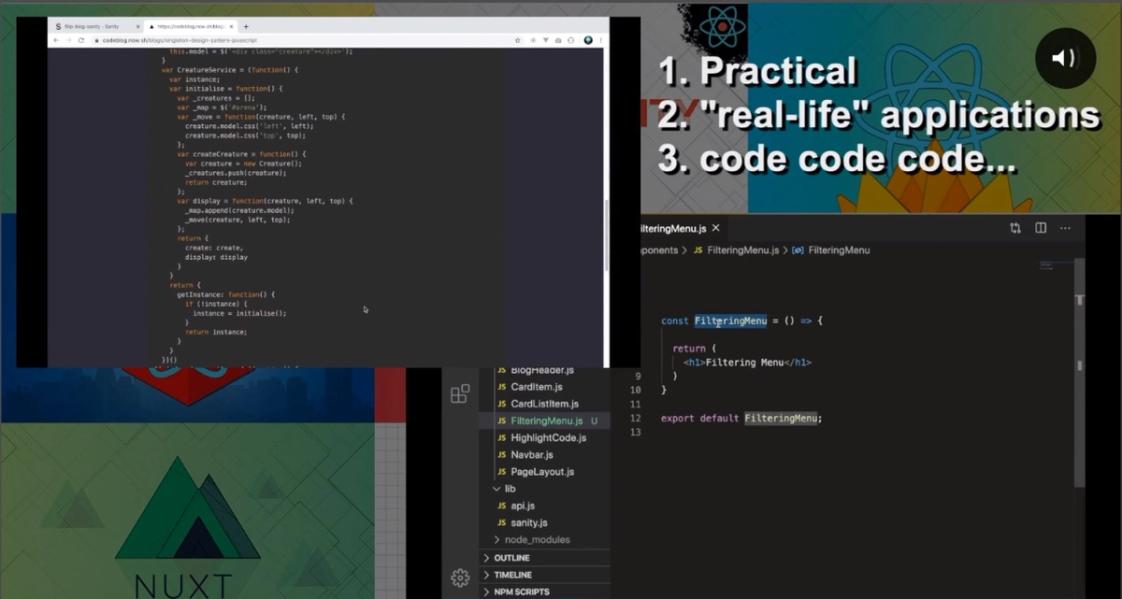 Filip Jerga, September 28, 2022
Filip Jerga, September 28, 2022
The only programming course platform you need (and why)
We'll elaborate on the only programming course platform you need to start and why.

If you haven't already hopped on to the programming bandwagon, there's no better time than the present.
Besides giving you a front to polish your logical and interpersonal abilities, a job in computer programming promises to keep your bank balance in good stead. The base pay of a programmer in the US is $78,430/yr.
Now, the question is, where do you get started with your learning journey?
While there's no shortage of options in the market, we will discuss a 360-degree programming course platform today. It offers all you need to become an accomplished programmer, even if you're a beginner — Eincode.
Read on to find out what makes Eincode unique and why it is a cut above the rest!
1. Singular Focus On Programming
At Eincode, our courses don't span across dozens and scores of genres. Our focus is exclusively on one entity, and that is, you guessed it, programming. Our courses revolve around a broad spectrum of programming — Angular. Js, Blockchain, C#, Firebase, Game development, Javascript, Node.js, React.js, Unity- you name it, we have it!
Some of our most popular courses are:
- Unity 2D With C# — Complete Game Dev Course: This course aims to familiarize you with the Unity editor's many nuances, enabling you to build a complete game from scratch.
- Web Development & Code 101- Beginner's Guide: In this course, you will learn programming in HTML, JS language, and CSS, covering six big topics. Various assignments and code exercises will drive your learning in each section.
- NFT Marketplace in React, Typescript & Solidity — Full Guide: This course teaches you everything you need for a decentralized NFT application as per ERC721 standard. The best part is that you'll learn about NFTs by creating a real-world application.
- Complete Next JS with React & Node Course: This course will enable you to start web development with modern frameworks like Next.js, React.js, and Node. Moreover, you'll learn to build a portfolio website you can share with future employers.
To check out our complete range of courses, visit our website.
2. Uniform Teaching Style
Every course you enroll in at Eincode will be taught to you by one instructor- Filip Jerga. This ensures that the teaching style across all the courses remains consistent. It makes matters highly convenient even when you're enrolled in multiple courses, right?
Filip's reputation, of course, precedes him. An experienced software engineer and freelance developer, he graduated from the Technical University Of Kosice in Artificial Intelligence.
He brings several years of experience working on a wide range of projects, from a C++ software engineer at Siemens and a full-stack JS developer in a Berlin tech startup to an online programming instructor.
Throughout his career, he has acquired advanced technical knowledge and the ability to explain programming topics clearly and in detail to a broad audience. His innate ability to explain web and software engineering concepts in a detailed, hands-on, and understandable way makes his courses worth attending.
3. Learning By Doing
At Eincode, we firmly believe that you can't teach programming via theory. Hence, all our courses are driven heavily by a practical approach. All the programming concepts and ideas are explained while coding practical applications.

Supporting materials such as wireframes are provided to you to visualize a concept better.

Every course requires you to deploy a real-life project. For instance, in the Unity 2D With C# — Complete Game Dev Course, you'll be asked to develop a production-ready 2D survival game with a top-down view from scratch. Similarly, in the Rust & WebAssembly with JS (TS) — The Practical Guide course, you'll be asked to create a browser-based Snake game.
Moreover, you can share every application or game you develop with your friends or even a larger public group.
4. Eincode Pro Membership
The Eincode Pro Membership enables subscribers to embark on a highly holistic programming journey. Upon taking the membership, you gain full and unlimited access to all current and future Eincode courses. You can, of course, purchase single courses, too if you have something specific in mind. All single courses are priced differently.

All these courses are self-paced, giving you a choice to engage at your convenience.
You can subscribe to the pro membership either on a monthly or annual basis. The best part? You can cancel anytime, no questions asked.
5. Quick Support
Don't assume that just because the courses are self-paced, you'll be asked to navigate them entirely on your own. You'll have the constant support of our mentor. Should you get stuck somewhere, don't think twice before filing a query. Rest assured that our instructor will answer all course-related queries within one business day.
6. Transparent Refund Policy
If you feel unsatisfied with any of our courses, you can always ask for a full refund within the first 30 days of your purchase. We'll refund your entire amount, no questions asked. If you have any questions regarding the process, our customer support team will be more than happy to discuss them with you.
7. Be Career and Future-Ready
Eincode courses range from beginner-friendly to advanced. This means you can join beginner-friendly courses with no prior programming experience and build your way up with advanced courses. Or you can begin with more intensive, advanced courses if you hold previous experience. Your experience with Eincode will be frictionless, nonetheless.
The curriculum relies heavily on real-life and practical applications to ensure you are industry and future-ready. Enroll in our courses and equip yourselves with a skill set that will allow you to walk into secure, high-paying jobs easily. Moreover, switching from one lucrative opportunity to another will also be well within your means. And don't forget that you'll have the skills to work from anywhere worldwide.
Code The Right Way With Eincode
Learning to program from scratch can appear overwhelming at the outset, but fret not! Eincode has got you covered. Our meticulously designed curriculum aims to make your learning as fun as possible while enabling you to breathe life into your wonderful ideas. Remember, with us, the sky's the limit! Enroll today.